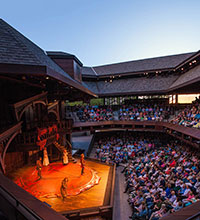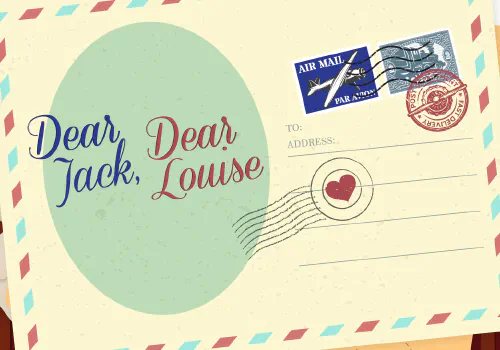Festival to Present Its First Outdoor Musical

By Liz Armstrong
The Utah Shakespeare Festival production of the musical Sweeney Todd in the outdoor Engelstad Shakespeare Theatre this summer will be a new experience for the Festival and will lay the groundwork for the theatre’s future. This will be the first time the Festival has produced a musical in an outdoor theatre, but it won’t be the last.
To accomplish this task the Festival is in the middle of a massive upgrading of the sound system in the theatre, a project that will allow the musical voices and accompaniment to be heard by everyone in the audience. In addition, these changes will help with acoustics in the theatre for all plays.
Production Manager Richard Girtain is excited. “We’re going to use this space in the future for musicals,” he said. “Of course, we will continue to focus on classical repertoire in the Engelstad Theatre, but this is not a one-and-done for musicals there.”
The Englestad Theatre, modeled after open-air Elizabethan theatres of Shakespeare’s time, wasn’t built with a sound system to support a musical like Sweeney Todd. The design of the theatre relies almost entirely on the projection of the actors’ voices as the “sound system. “The space wasn’t designed to do this kind of work,” Girtain said. “So we are adding the infrastructure for that.”
Girtain explained that there are actually two parts to this project. First, especially for the upcoming season, the goal is to implement a system to support musicals. “Supporting a musical requires a different sound system to support the voice,” Girtain explained. “We didn’t have microphones, speakers, and a mixing area like we have in the Randall L. Jones Theatre for musicals.
However, there is a second, equally important, part to this project that patrons may appreciate even more: The long-term goal is to also reinforce the spoken word in all plays, not just musicals. “When we reinforce the sound of the spoken word, we want it to be a natural, subtle improvement,” Girtain said. “It will help the audience to understand the words better, but hopefully they won’t know the sound system is even there.”
Girtain explained that when focusing on reinforcing voice, it’s important to think about the placement of speakers. “Audience members don’t want the voice to come from behind them, but from the stage, from where the actors are singing and speaking, so we are adding equipment to do that,” he said.
The discussion surrounding this project began over two years ago, but the first sound study was conducted last June. Girtain explained that an acoustical consultant, Acoustic Distinctions, visited the theatre to help get the project rolling. “They measured the space, the road noise, etc. and created a plan for us to mitigate it,” Girtain said. “In an indoor theater, you can control ambient noise, and you have more surfaces to bounce sound off, so you can control the sound better. In a theatre with no roof, and basically no walls, there’s lots of ambient noise coming in, and that’s the biggest challenge. We don’t have control of the sound outside the theatre.”
But the implementation of this sound system hasn’t been an easy process. With supply chain issues, contractors trying to catch up on projects they couldn’t complete during the pandemic, and the increased cost of supplies since 2020, Girtain and the Festival electrics department led by Scott Palfreyman and Danielle Davis have had their hands full.
“Getting everything here in a timely manner has been one of the biggest challenges, especially with the deadline of a show opening,” Girtain said.” Yet, despite a few bumps in the road, the sound system will be ready to go for Sweeney Todd, and it will provide an even better sound experience for patrons.
“This change is going to make the enjoyment of all of our productions better because the voice is going to be easier to understand,” said Girtain. “Whatever seat you’re in, you’re going to be able to understand the text better.”
Enjoying a musical outside will be a completely different experience than attending one in an indoor theatre, and Girtain is excited to see how the patrons react. “We are good storytellers here at the Festival, and this will help us more clearly articulate those stories,” he concluded.








